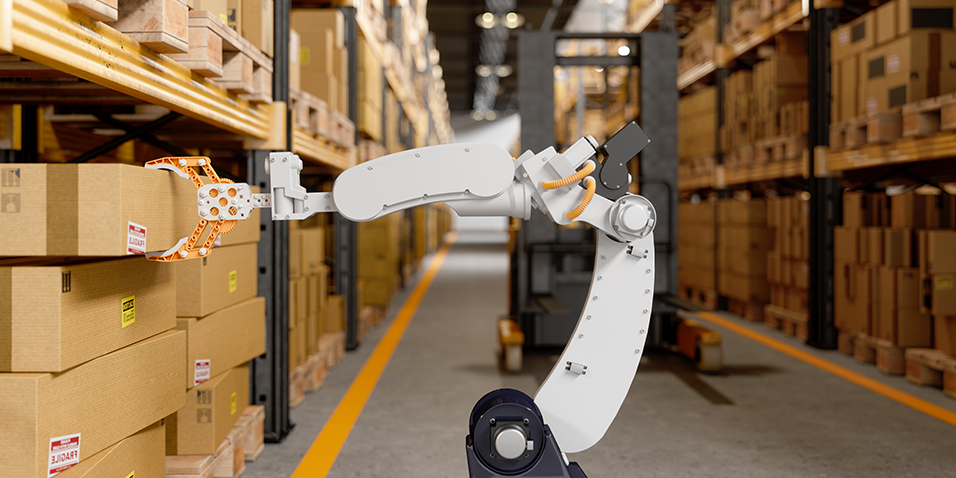
In the dynamic landscape of modern commerce, businesses are increasingly turning to automated solutions to streamline their operations, and shipping processes are no exception. “What is automated shipping, and how does it work?” — this inquiry unveils a realm of technological advancements designed to revolutionize the way goods are prepared, managed, and dispatched.
This exploration delves into the intricacies of automated shipping, unraveling the mechanics behind this innovative approach and shedding light on the seamless processes that propel products from the point of purchase to the hands of the eagerly awaiting customer.
What is automated shipping?

Automated shipping refers to the use of technology and systems to streamline and enhance the process of preparing, managing, and executing the shipment of goods. This can involve various automated systems, software, and machinery designed to reduce manual intervention, increase efficiency, and improve accuracy in the shipping and logistics operations of a business.
How Automated Shipping Works
Automatic shipping involves the use of technology and systems to streamline and execute various tasks related to shipping processes without manual intervention. Here’s an overview of how automatic shipping typically works:
Order Processing:
- The process begins with the automatic capture and processing of customer orders. When an order is placed on an ecommerce platform, the order details are automatically transmitted to the shipping system.
Integration with Ecommerce Platforms:
- Automatic shipping relies on seamless integration with ecommerce platforms. This integration ensures that order information, product details, and customer addresses flow smoothly between the ecommerce system and the shipping software.
Label Generation and Carrier Integration:
- Upon order processing, automatic shipping systems generate shipping labels automatically. These labels include essential details, and the system integrates with various shipping carriers to choose the most suitable one for each shipment.
Rate Calculation and Method Selection:
- The system calculates shipping rates in real-time based on factors like package weight, dimensions, and destination. Automatic shipping systems also select the appropriate shipping method and service level according to predefined rules or business preferences.
Tracking, Notifications, and Reporting:
- The system provides real-time tracking information for shipments. Automated notifications are sent to customers at key stages of the shipping process. Additionally, automatic shipping systems often include reporting and analytics features for businesses to monitor and optimize their shipping processes.
By automating these steps, businesses can streamline their shipping operations, reduce manual errors, and enhance overall efficiency in the fulfillment process.
Benefits of Shipping Automation

Shipping automation offers numerous benefits for businesses involved in order fulfillment and shipping processes. Here are some key advantages:
Enhanced Customer Experience:
- Automated shipping processes contribute to a better overall customer experience. With real-time tracking information and automated notifications, customers are kept informed about the status of their orders, leading to increased satisfaction and loyalty.
Scalability:
- Shipping automation systems are designed to handle increased order volumes without a proportional increase in manual labor. This scalability is crucial for businesses experiencing growth or fluctuations in demand.
Flexible Shipping Options:
- Automation enables businesses to integrate with multiple shipping carriers, providing flexibility in choosing the most suitable carriers and services for different shipments. This flexibility can lead to improved shipping times and cost savings.
Regulatory Compliance:
- Automated systems can assist in ensuring compliance with shipping regulations and requirements, especially for international shipments. This reduces the risk of delays and complications due to non-compliance with regulatory standards.
Strategic Focus:
- By automating routine shipping tasks, businesses can free up valuable human resources to focus on more strategic aspects of the business, such as marketing, customer service, and product development. This shift in focus can contribute to overall business growth and innovation.
In summary, shipping automation provides a range of benefits, including operational efficiency, cost savings, improved accuracy, and a better customer experience. It is a valuable investment for businesses looking to optimize their order fulfillment processes and remain competitive in the ecommerce landscape.
4 ways to automate your ecommerce shipping

Automating ecommerce shipping can significantly improve efficiency and reduce errors in your fulfillment process. Here are four ways to automate ecommerce shipping:
Integrated Shipping Software:
- Invest in shipping software that integrates seamlessly with your ecommerce platform. These tools often automate various aspects of shipping, including order processing, label generation, and carrier selection. Look for solutions that support multiple carriers to give you flexibility and cost-saving options.
Automated Order Processing:
- Utilize automated order processing systems that can capture and process orders in real-time. This automation ensures that orders are quickly entered into your system, allowing for faster fulfillment. This may involve integrating your ecommerce platform with your warehouse management system to maintain accurate inventory levels and order information.
Shipping Label Generation:
- Implement systems that automatically generate shipping labels based on the order details. This not only saves time but also reduces the likelihood of manual errors in address entry. Many ecommerce platforms offer integrations with shipping carriers to streamline this process.
Shipment Tracking and Notifications:
- Set up automated tracking and notification systems to keep both you and your customers informed about the status of shipments. Customers appreciate being able to track their orders in real-time, and automated notifications can be sent at key stages of the shipping process, such as when the order is shipped, out for delivery, or delivered.
Remember to assess your specific business needs and choose solutions that integrate seamlessly with your existing ecommerce infrastructure. Automation in shipping can lead to cost savings, improved accuracy, and a better overall customer experience.